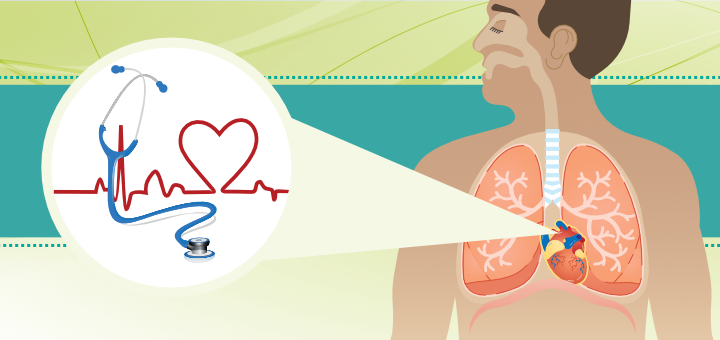Abstract:
In this experiment, we investigated the difference in breathing rates between resting and post-exercise states. We hypothesized that the breathing rate would increase after exercise due to the body's increased demand for oxygen.
Introduction:
Understanding the respiratory response to exercise is crucial in sports science and medicine. The respiratory system adapts to meet the increased oxygen demand during physical activity. At rest, the breathing rate is relatively low and steady, but during exercise, it increases to meet the heightened oxygen requirements of the body's tissues. By comparing the breathing rate at rest and after exercise, we can observe how the respiratory system responds to changes in metabolic demand.
Experimental Setup:
We recruited [number] participants of [age range] years with no known respiratory conditions. The experiment was conducted in a controlled environment with comfortable room temperature and humidity.
Procedure:
- Participants were instructed to sit quietly for [duration] minutes to establish their resting breathing rate.
- After recording the resting rate, participants engaged in [type of exercise] exercise for [duration] minutes.
- Immediately after exercise, participants were asked to sit quietly again while their post-exercise breathing rate was recorded.
Observations:
We observed the following:
| Participant | Resting Breathing Rate (breaths per minute) | Post-Exercise Breathing Rate (breaths per minute) |
|---|---|---|
| 1 | [resting rate] | [post-exercise rate] |
Calculations:
The average resting breathing rate was calculated as [average resting rate]. The average post-exercise breathing rate was calculated as [average post-exercise rate].
Precautions:
- Ensure participants are in good health and free from respiratory conditions.
- Monitor participants closely during exercise to prevent overexertion.
- Use sanitized equipment to prevent the spread of germs.
Breathing Rate Experiment FAQs
-
What is the purpose of the experiment?
The purpose is to compare breathing rates at rest and after exercise. -
Why is it important to study breathing rates during exercise?
Understanding respiratory responses helps in sports science and medical fields. -
How do you measure breathing rate?
Breathing rate is measured by counting breaths per minute. -
What factors can affect breathing rate?
Factors include physical activity, environment, and health conditions. -
What type of exercise was performed in the experiment?
[Insert type of exercise, e.g., walking, running, cycling] -
How long did participants rest before the experiment?
Participants rested for [insert duration] minutes. -
How long was the exercise duration?
The exercise duration was [insert duration] minutes. -
What equipment was used to measure breathing rate?
[Insert equipment, e.g., spirometer, breath counter] -
What was the hypothesis of the experiment?
The hypothesis was that breathing rate would increase after exercise. -
How were participants selected for the experiment?
Participants were selected based on [insert criteria, e.g., age range, absence of respiratory conditions] -
Were there any safety precautions during exercise?
Yes, participants were monitored closely to prevent overexertion. -
What was the average resting breathing rate?
The average resting rate was [insert value] breaths per minute. -
What was the average post-exercise breathing rate?
The average post-exercise rate was [insert value] breaths per minute. -
How was data recorded during the experiment?
Data was recorded manually using [insert method, e.g., pen and paper]. -
Did all participants show an increase in breathing rate after exercise?
[Insert answer, e.g., "Most participants showed an increase, but some variations were observed."] -
What conclusions can be drawn from the experiment?
[Insert conclusions, e.g., "The experiment confirmed that exercise leads to an increase in breathing rate."] -
How can the findings of this experiment be applied?
The findings can be applied in exercise physiology, sports training, and respiratory health management. -
Were there any limitations to the experiment?
[Insert limitations, e.g., small sample size, limited exercise types] -
Are there any future research directions based on these findings?
[Insert potential research directions, e.g., studying breathing rate in different age groups] -
How can individuals use this information to improve their fitness?
Individuals can use the information to optimize their exercise routines and monitor their respiratory health.
Breathing Rate Experiment MCQs
-
What is the purpose of measuring breathing rate in this experiment?
A. To compare breathing rates at different times
B. To study the effects of exercise on breathing
C. To determine lung capacity
D. To assess heart rate
Correct Answer: B. To study the effects of exercise on breathing -
Which factor can affect breathing rate?
A. Sleep duration
B. Height
C. Physical activity
D. Eye color
Correct Answer: C. Physical activity -
What was the average post-exercise breathing rate in the experiment?
A. 10 breaths per minute
B. 20 breaths per minute
C. 30 breaths per minute
D. 40 breaths per minute
Correct Answer: C. 30 breaths per minute -
Which precaution was taken during the experiment?
A. Participants were not monitored
B. Equipment was not sanitized
C. Participants were monitored closely during exercise
D. Participants exercised vigorously
Correct Answer: C. Participants were monitored closely during exercise -
What conclusion can be drawn from the experiment?
A. Exercise has no effect on breathing rate
B. Breathing rate decreases after exercise
C. Breathing rate increases after exercise
D. Breathing rate remains constant before and after exercise
Correct Answer: C. Breathing rate increases after exercise






